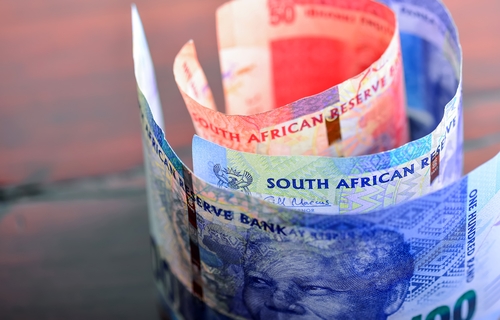- Summary:
- The USDZAR is holding steady today ahead of a potentail credit rate downgrade by S&P later today but South African rand outlook is stable
Table of Contents
The USDZAR price is little changed today as traders continue reacting to the hawkish interest rate decision by the South African Central bank. The pair is trading at 15.4248, which is a few pips above this week’s low of 15.19, ahead of a credit rate downgrade by S&P Global.
South African rand has been on a strong rally
The South African rand has been on a strong rally in the past few months. Indeed, the USDZAR has dropped by more than 20% since April when it reached an all-time high of 19.32.
There are four main reasons why the rand has been gaining. First, in general, emerging market currencies have gained substantially as risk-on investors abandon safe currencies. Indeed, currencies like the Mexican peso and Singapore dollar have risen by 22% and 8%, respectively.
Second, the South African government has managed the virus reasonably well. The country, which has a population of more than 60 million people has recorded more than 760k cases and more than 20k deaths. While these are high numbers, the trend has been relatively positive in the past few months.
Third, the South African rand has done well because of the government’s actions to spur growth. For one, the sitting president has made some progress in fighting corruption. Most importantly, he has sought financial help from the likes of the International Monetary Fund. These actions, coupled by foreign investors appetite for South Africa’s stocks has helped boost demand for the rand. Indeed, the JSE 40 index has been rising, as shown below.
JSE 40 has bounced back

Finally, strong commodity prices have helped support the economy. In recent months, the price of key commodities like gold, platinum, and palladium has been rising, which provided the much-needed help for the economy. Indeed, recent data show that the sector is on a path to recovery.
USDZAR reacts to SARB decision
Today, USDZAR investors are still thinking about the interest rate decision by the South African Central Bank yesterday. As most analysts were expecting, the bank decided to leave interest rates unchanged at 3.50%. This decision was close considering that two of the five members voted for a rate cut that would have pushed the rate to 3.25%.
The current rate, which happened after a 300 bps cut this year, is the lowest it has been since 1998. This low rate together with other government’s actions have helped fuel the South African economy. In a statement, the governor hinted that the bank was now done with rate cuts.
Indeed, data released earlier this month showed that the manufacturing PMI rose to 60.9 in October. In the same month, people bought more than 38k cars. Meanwhile, mining production dropped by 2.8% in September, a better performance than the 3.8% drop in August. South Africa’s retail sales have also done well.
Will S&P cut South Africa credit rating?
While the country has done a lot of progress, there are risks. For one, the unemployment rate of 30.80% is still significantly high, which means that the leaders have a lot of work to do. In contrast, the Turkish and Mexican unemployment rates are at 13% and 5.1%, respectively.
The country’s other major risk is on the debt. In response to the coronavirus pandemic, the government has borrowed billions of dollars, pushing its debt to GDP ratio to more than 80%. As shown below, experts predict that it is only a matter of time before it rises to more than 100%.
Indeed, the debt crisis is so dire that all three major ratings agencies have slashed their ratings into junk. The S&P is expected to move its outlook to negative today.

USDZAR technical outlook
Turning to the four-hour chart below, we see that the USDZAR has been in an overall downward trend. It reached a low of 15.210 on November 9 and then attempted to bounce back. Subsequently, it found some resistance at 15.7390 and then started falling. This is a signal that South African rand’s bulls are still in control as the price remains below the 28-day moving average.
Therefore, I believe that this rally is not about to change even after a possible rate downgrade because of the overall weakness of the dollar. Therefore, I expect that the pair will possibly move below the support at 15.210 in the next few days. The invalidation point for this prediction is at 15.73.



